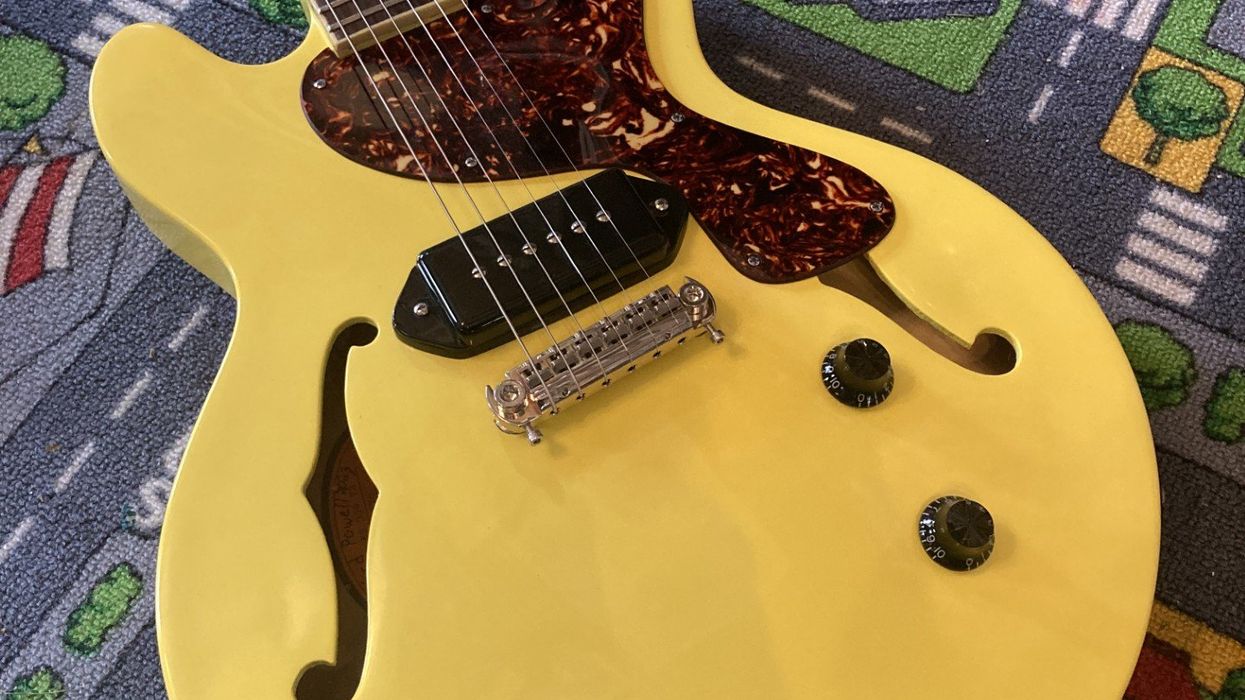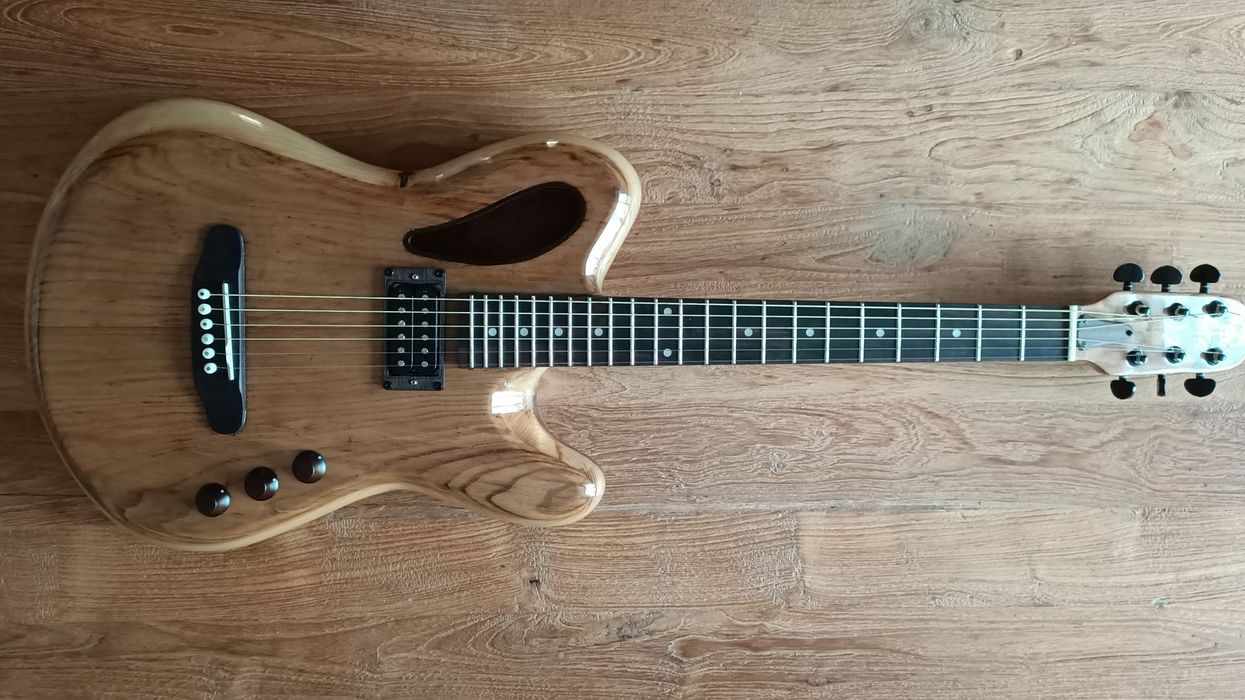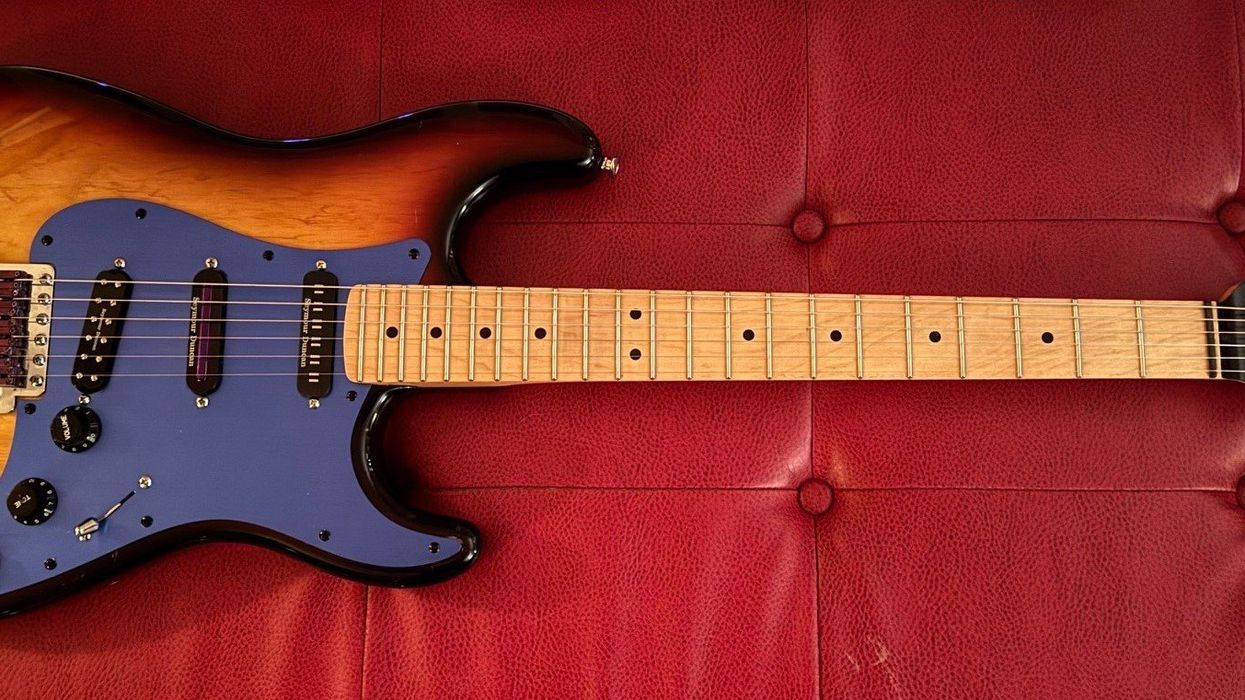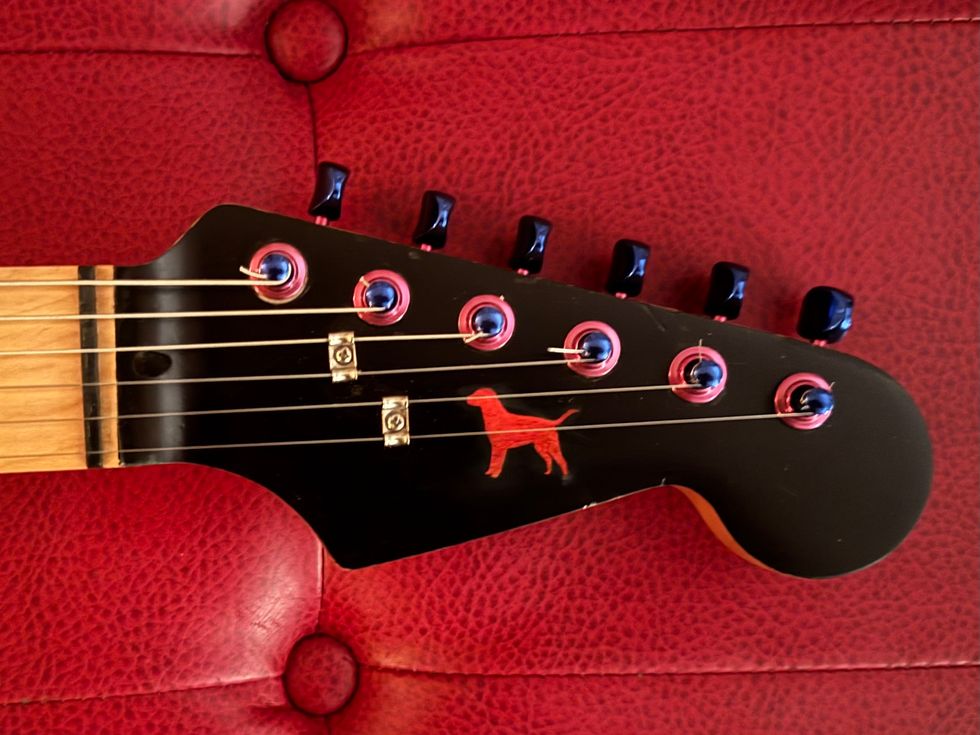I glued the cracked body back together, and planned to restore a guitar and make it look like my 1985 ZZ, but I wondered about the spare body and neck. Someone suggested making a doubleneck like James Hetfield’s, and since I’m a bass player and also a huge Rush fan, a doubleneck with a bass on top and guitar on bottom sounded fun. “Xanadu,” anyone?
After some mockups, I cut both bodies and glued them together, keeping the Explorer-ish shape. I had some spare parts lying around from other projects, so I used them. Since I was doing this project on a shoestring budget, and didn’t know any professional painters who would work for free, I decided to paint it myself. I found articles about DIY instrument painting using off-the-shelf colors and rattle cans. By this time, it was October, and in typical New England fashion, we had a freak snowstorm. The temperature and humidity were all over the place, and inexperienced me trudged on with painting and sanding, hoping to finish the project before Christmas.
“Since I’m a bass player and also a huge Rush fan, a doubleneck with a bass on top and guitar on bottom sounded fun. Xanadu, anyone?”
The biggest headache of all came from a little piece of wood in between the guitar neck and the neck pickup that fell off during sanding. Without thinking, I cut the excess neck pocket where that piece was, mounted the neck, and went on doing other things. I inadvertently had changed the scale length of the guitar, which would keep me from properly tuning it. This was apparent when I tried to play a simple G chord—it sounded horribly out of tune. I had to move the neck back to its original position and there are visible scars from the mistake, but there’s not much I can do about that now. This project taught me a lot, especially to accept who I am: not perfect. I’m not, and the doubleneck is not either—and I’m okay with it! It’s a fun instrument to play and one of my favorite-sounding basses!
Submit your guitar story at premierguitar.com/reader-guitar-of-the-month.
If your story is chosen, you'll also receive a $100 virtual gift card from Allparts, the industry’s leading supplier of guitar and bass parts! All entrants will receive a 20-percent-off coupon to allparts.com.
Please note that the coupon cannot be combined with other promotions.
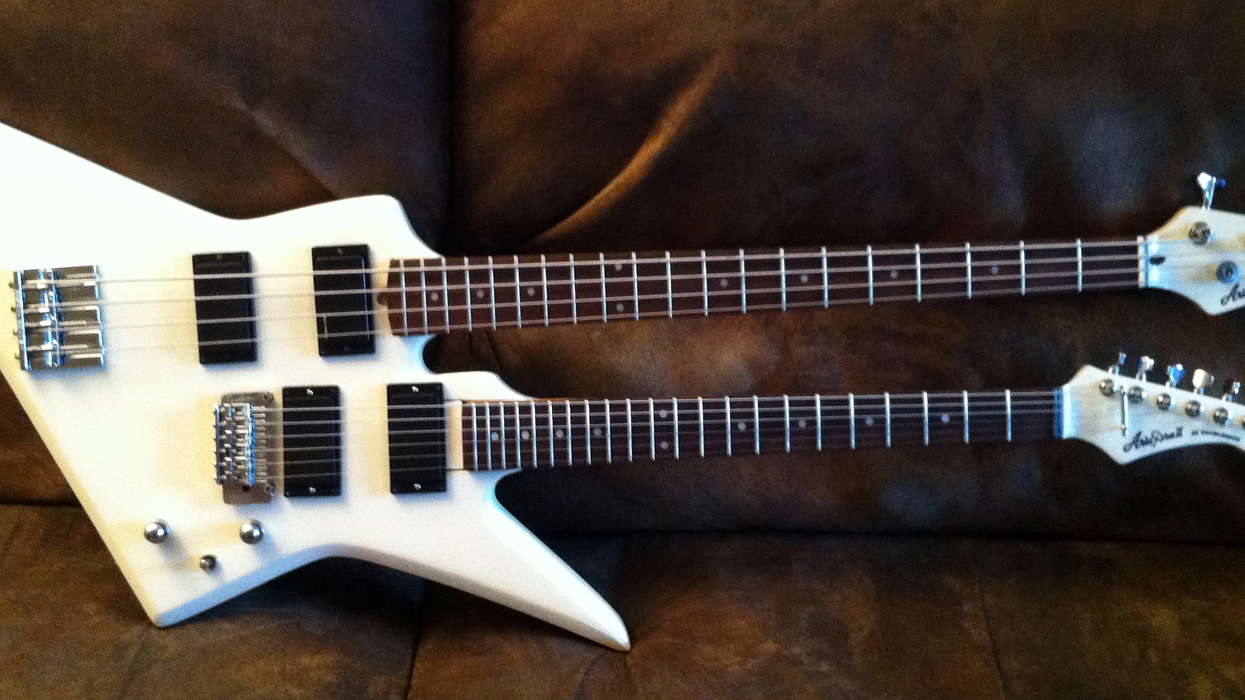


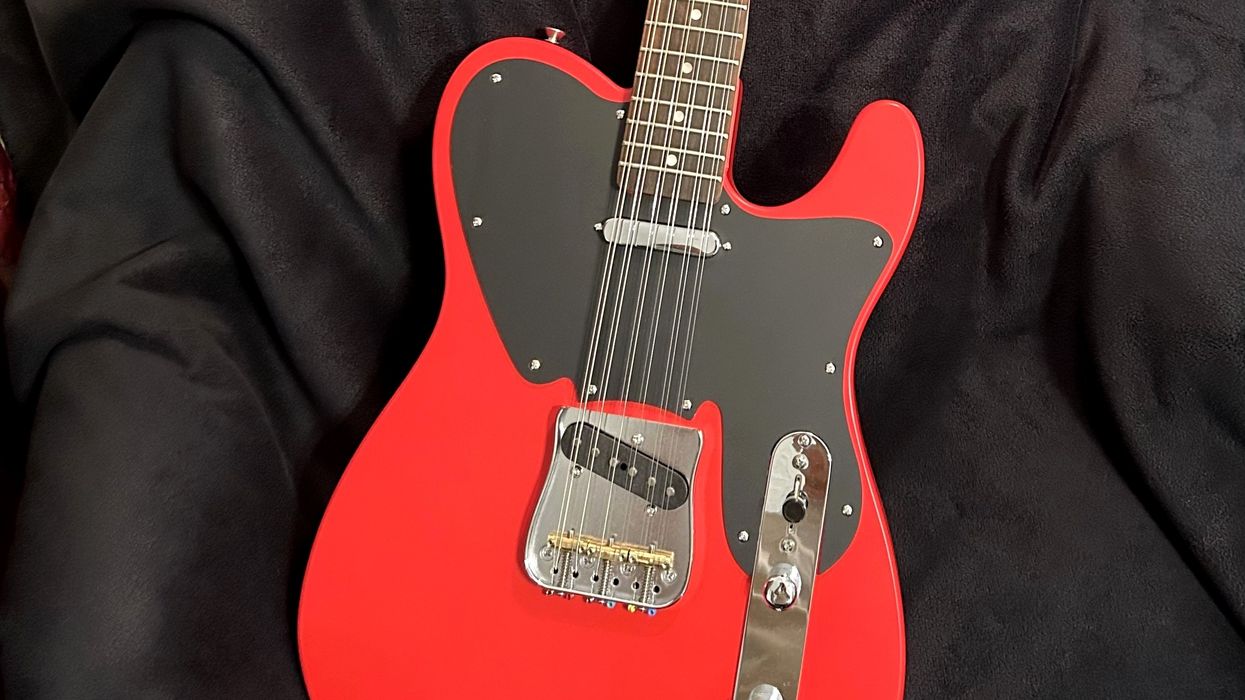

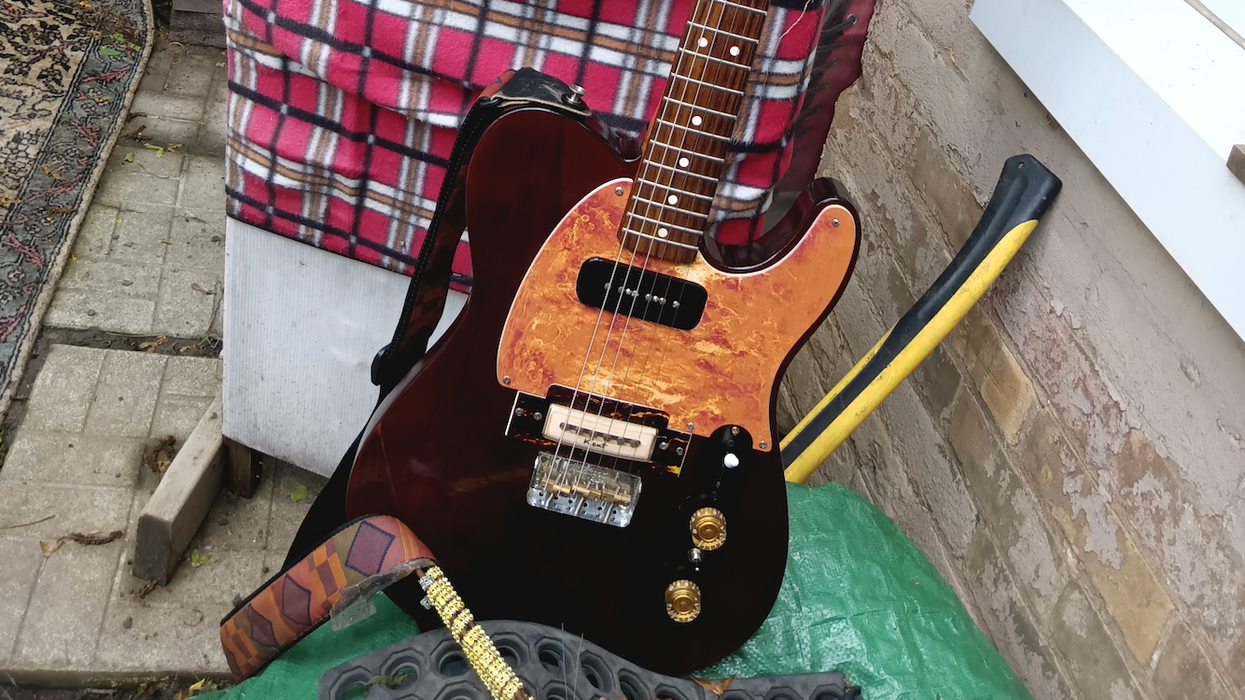





![Rig Rundown: AFI [2025]](https://www.premierguitar.com/media-library/youtube.jpg?id=62064741&width=1245&height=700&quality=70&coordinates=0%2C0%2C0%2C0)
